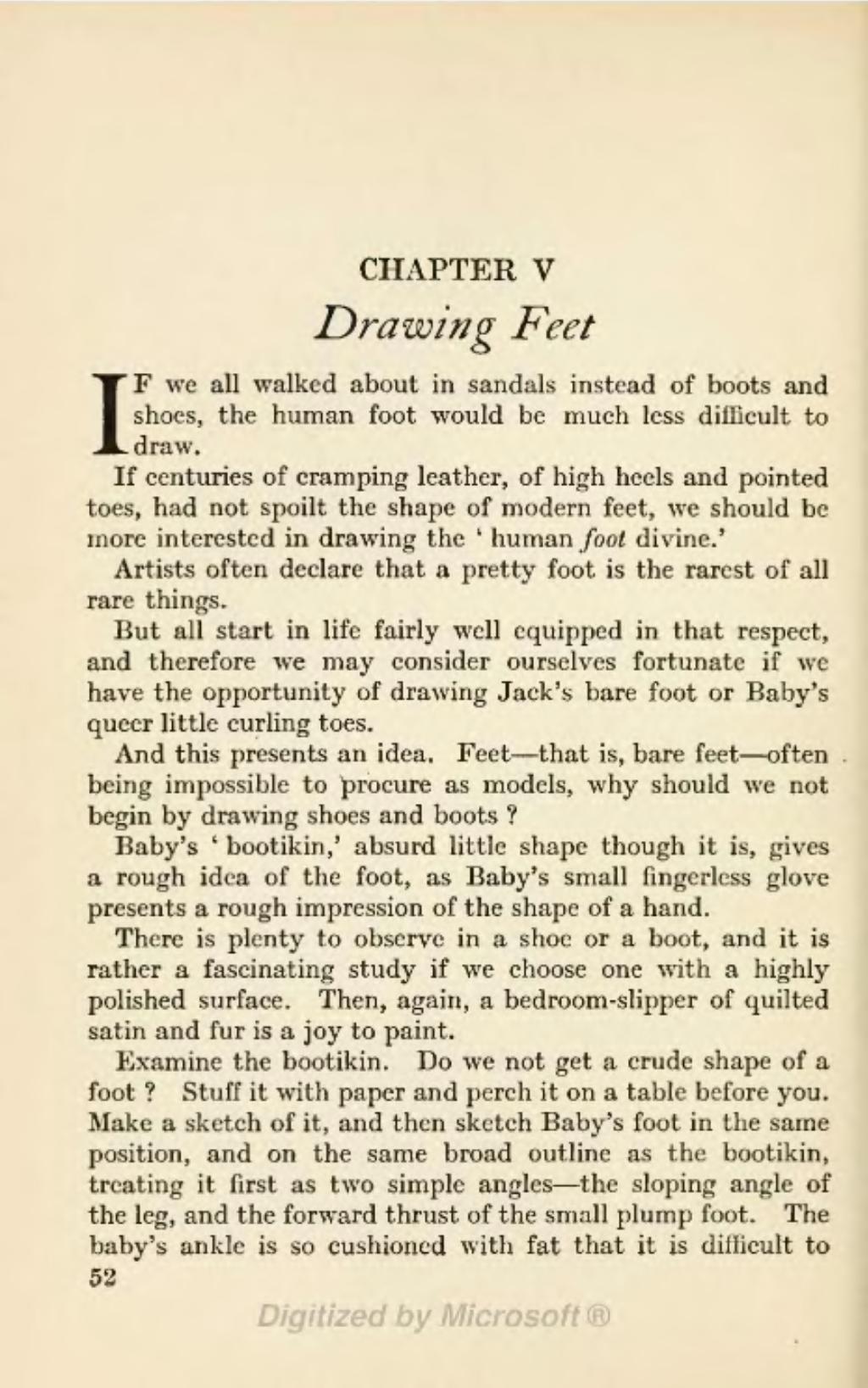CHAPTER V
Drawing Feet
IF we all walked about in sandals instead of boots and shoes, the human foot would be much less difficult to draw.
If centuries of cramping leather, of high heels and pointed toes, had not spoilt the shape of modern feet, we should be more interested in drawing the 'human foot divine.'
Artists often declare that a pretty foot is the rarest of all rare things.
But all start in life fairly well equipped in that respect, and therefore should consider ourselves fortunate if we have the opportunity of drawing Jack's bare foot or Baby's queer little curling toes.
And this presents an idea. Feet—that is, bare feet—often being impossible to procure as models, why should we not begin by drawing shoes and boots?
Baby's 'bootikin,' absurd little shape though it is, gives a rough idea of the foot, as Baby's small fingerless glove presents a rough impression of the shape of a hand.
There is plenty to observe in a shoe or a boot, and it is rather a fascinating study if we choose one with a highly polished surface. Then, again, a bedroom-slipper of quilted satin and fur is a joy to paint.
Examine the bootikin. Do we not get a crude shape of a foot? Stuff it with paper and perch it on a table before you. Make a sketch of it, and then sketch Baby's foot in the same position, and on the same broad outline as the bootikin, treating it first as two simple angles—the sloping angle of the leg, and the forward thrust of the small plump foot. The baby's ankle is so cushioned with fat that it is difficult to
